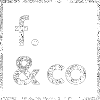20. Tradewinds
If you asked it “What’s in a name?”, Barcelona, this millenia-old iberian town nested on a small strip of land between “mar i montayna” on the western edge of the Mediterranean, would probably answer “boat.” Many legends propose various origins for Barcelona and no etymological research can link its name to the Spanish or Catalan word for boat (barco, barca), but the city’s history speaks for itself.
A history of change and diversities
It went from being a small town successively controlled over the centuries by Carthaginians, Romans, Visigoths, Moors and Carolingians to becoming the epicenter of a commercial empire spreading to all corners of the Mediterranean. Controlling the waters at a certain time meant having the high hand on trade routes. Peoples who could conjugate a secure, defensible foothold on the sea with steady access to shipbuilding resources, quality craftsmanship and fearless captains, could command the whole of the Mediterranean.
The power of “Ciutat Comtal”, the city of Barcelona counts, only declined when the Crown of Aragon merged with the Castillans and trade moved towards the Americas. As it grew again thanks to the industrial revolution into the modernist capital it became in the late 19th century, Barcelona was established as one of the most important ports of Europe.
Shifting windfalls
Barcelona is, undoubtedly, first and foremost a maritime city. It is built with sandstone, lives on fish and seafood and smells of the wild saline winds that infuse the travel bug.Its relatively small footprint along the coast can be visualized, as the centuries roll, as a sort of breathing, the land expanding over the sea, in and out and in again.
Today, Barcelona’s dominance in world rankings of cool cities is not based on the windfalls of Mediterranean trade routes. One could argue that its success is rather attributable to its limitless capacity to extract of pleasure, for which the sea is a pretty good resource. Which other destination makes better use of its privileged position on the Mediterranean than the host of the 1992 Olympic Games, for which the coast was reclaimed from industrial decay?
Urban lab, living city
Part of what makes Barcelona’s success is its capacity to morph itself, continuously, along the edges of its time. Every 25 years or so, a new architectural movement takes the stage in the Catalan capital, a greater-than-nature laboratory for the construction of landmarks. For starters, the city has a “chief architect” position, currently held by Vicente Guallart, who does not lack any vision or ambition. As the built environment envisioned in 1859 by the Cerda masterplan is being completed, Guallart says he wants to move the cityinto another “big cycle”, by adding a metabolism, a productive engine to this beautifully-built machine along Avinguda Diagonal.
From Gaudí and the modernists’ simultaneous invention of both the dreamy, nature-inspired architecture and the ultimate, grid-based modern metropolis, to the communities of young architects, designers and artists building networks, setting up coworking spaces and dreaming up manifestoes for the future, Barcelona has grown into the ultimate “smart” city. Smart not because of its technological infrastructure (which it is developing), but from its capacity to generate, welcome and foster ideas; test and prototype them; and dream up a cohesive global vision out of their diversity.
Barcelona has got its sails full. And it’s ideas and creativity providing the wind.
This text is part of a series written in the context of the Fifth edition of the Montreal-Barcelona Summer School on Management of Creativity, organized by Mosaic HEC Montréal and Universitat Barcelona, July 9 to 24, 2013.
Illustration by Studio 923a. Read all posts in the series at blog.fandco.ca/yulbcn.


